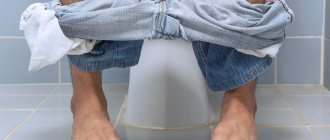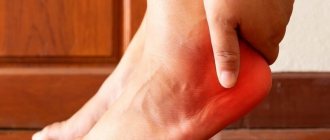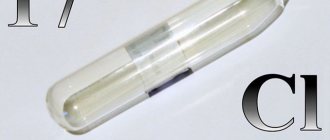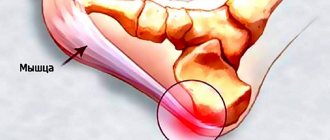Often, at the end of the day, most people feel tired in their lower extremities, many of them complain of swelling and pain in their legs. The reasons for the appearance of these symptoms can be very diverse, including the presence of an advanced disease in the body. Therefore, if your leg is swollen and hurts for no reason, you need to consult a doctor who will find out why your legs are swollen and prescribe adequate therapy.
What is leg swelling
Swelling of the legs is an external manifestation of the accumulation of fluid in the body. At the same time, the limb itself noticeably increases in size, the skin on it becomes loose, and when pressed, dents appear that do not disappear instantly.
Swelling usually occurs in the evening, although it can still cause discomfort the next morning. It is localized:
- in the feet;
- in the ankles;
- in the legs;
- from socks to knee.
Depending on the reasons, either one leg or both may swell. Symmetrical distribution often indicates generalized edema, which may be a symptom of a life-threatening condition.
If this trouble appears rarely, then you can fight it with folk remedies. The regularity of occurrence indicates a disease of the internal organs. Therefore, it is important to establish the nature of the swelling.
What home or folk remedies help relieve swelling?
There are several simple tips and methods that will help reduce swelling and prevent their occurrence:
- reduce salt intake Compression stockings reduce swelling and the discomfort that comes with it.
- lose excess weight if necessary
- Exercising regularly is a good prevention against edema.
- When resting, place a pillow under your feet to improve blood circulation and relieve swelling in your feet
- wear compression stockings if your legs swell
- do not sit or stand for long periods of time
- get up and walk more often
- try to avoid temperature changes, such as when going to a bathhouse, sauna or taking a hot bath
- dress warmly in cold weather
A massage therapist or physical therapist can help remove excess fluid by massaging problem areas of the body towards the heart.
Oxygen is used to treat some types of edema, for example, patients with cardiogenic pulmonary edema often have trouble breathing and lack of oxygen.
For macular edema, it is recommended to breathe oxygen through the nose to improve vision.
Hyperbaric oxygen therapy has been found to increase the risk of pulmonary edema.
Causes of leg swelling
When there is too much fluid in the tissues, it means that there is a malfunction in the functioning of the body. Most often, swelling is caused by:
- protein metabolism disorder;
- damage to cell membranes, increasing their permeability;
- changes in pressure differences in tissues and vessels;
- impaired blood circulation.
There are many reasons for such failures. Some are temporary (allergic reaction, bruise, infection). Others indicate the development of pathologies of the lower extremities (varicose veins, thrombophlebitis). Still others indicate serious diseases of the internal organs (heart, kidneys, lymphatic system).
A person cannot independently determine why his foot is swollen: because of uncomfortable shoes or because of a blocked blood vessel. Therefore, you should not postpone a visit to the doctor for subsequent treatment.
Diagnostics
Since swelling of the legs is caused by completely different reasons, treatment depends on them. Diagnostics is carried out in several stages. You can independently determine the severity of the cause if you pay attention to when swelling occurs and under what conditions it goes away (if it goes away).
For example, if you drink a lot of liquid at night, then slight swelling in the ankle and foot may well occur in the morning. If the swelling goes away after rest, it means that it is caused by significant stress on the legs, and this should be reduced. For other conditions, consultation with a doctor is necessary.
The first thing you should do is see a therapist. He will conduct an initial examination, take into account the patient’s complaints, then examine the swelling by palpation, measure the body temperature and the directly swollen area, and blood pressure.
The results that will be obtained will become the basis for further research:
- general blood test (to determine the level of hemoglobin, red blood cells, platelets, ESR), urine (to determine the level of protein and red blood cells);
- blood sugar test (to detect diabetes mellitus);
- ECG;
- hormone tests;
- Ultrasound of blood vessels and internal organs.
Additionally, MRI, coronography, angiography, etc. may be prescribed.
It is on the basis of the data obtained that the doctor prescribes treatment and refers to highly specialized doctors:
- phlebologist,
- traumatologist,
- nutritionist,
- cardiologist,
- nephrologist.
Why does one leg swell?
If the swelling is asymmetrical, its cause is localized directly in the affected limb. Swelling may occur due to bruises on the legs or more serious injuries:
- ankle joint injuries;
- meniscus tear;
- separation of the calf muscle;
- bone fracture;
- tissue compression.
Venous edema is also most often unilateral. Varicose veins cause fluid stagnation, but they are localized in one limb where the vessels are affected. This is indicated by the characteristic venous network.
Thrombophlebitis disrupts blood circulation, and at the same time the outflow of fluid from tissues. In this case, swelling is accompanied by other unpleasant symptoms: fever, pain, compaction in the blockage area.
Injuries
When a leg is broken, swelling of the tissues located next to the damaged area of the bone occurs within a short time. The skin over the damaged area becomes bluish, and increasing pain occurs. The limb may become fixed in an unnatural position.
With a bruise, swelling also develops, which prevents normal movement of the leg. The hematoma appears after a few days, and the pain, sharp at first, gradually subsides.
If there is a suspicion of a leg injury, you cannot wait. To avoid serious problems, you must immediately go to an emergency room or hospital and undergo an x-ray to determine the nature of the damage.
Source: depositphotos.com
Why do both legs swell?
If by the end of the day both lower limbs are swollen, it means that excess fluid is present throughout the body. Most often this condition is caused by:
- heat;
- excessive fluid intake;
- obesity;
- uncomfortable shoes (tight, high heels, completely flat soles);
- flat feet;
- unhealthy diet (lots of salty and spicy foods in the diet);
- standing on your feet for a long time or in an uncomfortable position.
Fluid stagnation in these cases is caused by improper load distribution. None of the above indicates a threat to life, and the swelling goes away in a day or two. For some, it is enough to take off their shoes and relax, while others resort to folk remedies to relieve discomfort. But symmetrically swollen legs can also indicate more serious diseases that require urgent treatment.
When general swelling indicates danger to life
Sometimes swelling of the lower extremities is a symptom of a general imbalance in the body's hydrobalance. In the case of heart failure, the body's main muscle cannot cope with pumping blood. The fluid in the body is distributed unevenly, and too much accumulates at the bottom. If the patient stands or sits in one position for a long time, his feet and legs swell.
Kidney failure can also lead to swelling. It appears not only on the legs, but also on the arms, face (mainly under the eyes), and abdominal wall.
If cardiac edema develops gradually (over weeks), then renal edema develops very quickly. With cardiac diseases, the skin becomes colder, with kidney diseases it maintains a normal temperature.
Fluid retention can also be caused by lymphedema, which is damage to the lymphatic vessels. The swelling in this case is dense; after pressing on the skin, there is no indentation.
Symptoms
The manifestation of edema will depend on the cause that causes it, the type of edema and its location, but the common symptoms are pain, swelling and tense skin.
A person with edema may experience:
- swollen, tight and shiny skin;
- after pressing on the skin, an indentation remains for several seconds;
- swelling of the ankles, face and eyes;
- pain in different parts of the body and limited joint mobility;
- weight gain or loss;
- veins on the arms and neck become very noticeable;
- high blood pressure and rapid pulse;
- headache;
- abdominal pain;
- changes in normal bowel habits;
- nausea and vomiting;
- confusion;
- visual hallucinations.
Why do feet swell during pregnancy?
During pregnancy, the outflow of fluid is often disrupted. This is explained by large-scale changes occurring in the body:
- weight gain;
- changes in hormonal levels;
- compression of the inferior vena cava by the enlarging uterus;
- decreased mobility;
- diet correction.
In most cases, swelling is considered as a variant of the physiological norm. There is no need to resort to drug treatment; it is enough to keep the situation under control. However, the spread of edema throughout the body can result in serious pathologies, such as preeclampsia.
The expectant mother should monitor the dynamics of the increase in calf circumference, blood pressure and the ratio of fluid consumed and excreted. The kidneys experience increased stress during pregnancy, so at the first alarming symptoms it is better to be examined by a nephrologist.
Gout
Gout is a metabolic disorder in which uric acid salts (urates) accumulate in the body. They settle in the internal cavities of the joints, including the joints of the legs. In the affected areas, inflammatory processes develop, manifested by severe paroxysmal pain, redness of the skin and swelling.
Source: depositphotos.com
Treatment of leg swelling
The treatment package depends on the cause of the unpleasant symptom. If it is not associated with serious diseases, but is caused by improper distribution of the load, it is enough to locally relieve the swelling. This can be done at home.
If it is caused by local reactions (bruise, allergy, infection), then it is necessary to provide the victim with the necessary assistance:
- treat the damaged area;
- apply ice;
- give medicine.
Sometimes this can be done at home, sometimes medical attention is required. After a few days, the swelling will disappear as the tissue heals.
Drug treatment under the supervision of a phlebologist is required for varicose veins and thrombophlebitis. If the disease is advanced, surgery may be required. After restoration of venous tone and normal blood circulation, external symptoms will disappear.
Complications
If left untreated, swelling can lead to:
- extensive swelling with pain that gets worse over time
- Difficulty bending and straightening limbs and walking
- stretched and itchy skin
- infections in the area of swelling
- the appearance of scars between tissues
- poor circulation
- loss of elasticity of veins, arteries and joints
- skin ulceration
Any disease or illness must be treated on time to avoid future health problems.
Source: https://www.medicalnewstoday.com/articles/159111.php
How to relieve swelling after a bruise
Treatment for a leg bruise usually comes down to eliminating pain and swelling. The swelling in this case is caused by damage to the blood vessels and the accumulation of fluid from them under the skin. The latter puts pressure on the nerve endings, hence the pain. So eliminating swelling also helps to get rid of unpleasant sensations.
You can help a bruised limb at home:
- stretch and provide peace;
- apply a wet towel, ice or a heating pad with cold water;
- apply a tight bandage.
You can also resort to drug treatment. External agents containing troxerutin or heparin will help. They strengthen capillaries, optimize blood viscosity and relieve inflammation.
How to relieve leg swelling caused by heat
The best medicine in this case is gravity. Arriving home and throwing away the shoes that have become a vice, it is enough to lie down and place your feet higher (at a minimum - on several pillows, at a maximum - against the wall).
When it becomes easier to move, you need to take a shower. Ideally, a contrasting one that trains blood vessels, but you can limit yourself to just cool. In this case, you should direct the pressure to the feet: such a hydromassage will restore blood circulation.
You can disperse the fluid with light exercises: pulling the toe towards you and away from you, rotating your feet, squatting. But if you don’t have the strength to do this, and your legs hurt, it’s better not to torture them.
Foot baths are also useful. Even plain water will provide relief, but you can enhance the effects with additives. This could be sea salt or herbal infusions. Compresses made from cabbage leaves or bandages soaked in a decoction of birch leaves improve the condition of the limbs.
Treatment of leg swelling due to heart or kidney failure
Patients with heart or kidney failure should be under the supervision of a physician. In acute attacks, resuscitation is required. If the disease takes a chronic form, swelling is removed as it appears with the help of diuretics and nutritional correction. Medicines should:
- stabilize blood pressure;
- remove excess sodium from the body;
- prevent protein loss;
- normalize blood flow speed.
When using diuretics (diuretics), it is important not to exceed the permissible dosage. Otherwise, there is a risk of getting the opposite effect in the form of drug-induced edema during withdrawal. They are caused by the kidneys’ reaction to a sudden change in the mode of fluid excretion.
Relieving swelling during pregnancy
In the body of a woman carrying a fetus, the concentration of the hormone progesterone increases. It is one of the causes of edema during pregnancy. In no case should it be reduced, because it is this that ensures the attachment of the embryo.
There is no need to fight physiological swelling. The main thing is to prevent it from getting worse. To alleviate the symptoms, you can carry out the mentioned water procedures and adhere to a healthy lifestyle (moderate activity, water consumption within the daily norm, adjusted for restrictions imposed by pregnancy, rest on your side).
The pathological nature of edema can only be determined by a doctor based on test results (in particular, protein in the urine). Having discovered the cause, he will prescribe treatment. It is prohibited to take any medications on your own.
Prevention
Swelling cannot always be prevented, since it can occur under the influence of uncontrollable factors. There is no way to prevent a bruise or insect bite. But in general, maintaining hydrobalance in the body is easy:
- Observe the drinking regime: fully quench your thirst, but do not drink more than you should.
- Stick to a diet during the hot season: minimize the consumption of salty and spicy foods, eat more fruits, drink tea with lemon instead of coffee.
- Arrange water treatments: contrast showers, foot baths.
- Move more: walking, swimming, aerobics do not allow fluid to stagnate.
In summer, you should avoid tight, high-heeled shoes. It is useful to periodically place your feet on an elevation so that fluid concentrated in the lower part of the body drains. There is no need to abuse medications. Urinary and antihypertensive drugs should be prescribed by a doctor. Any diseases that have a similar symptom must be treated in a timely manner.
Tokareva Lyudmila Georgievna, therapist, medical offices 36.6.
THERE ARE CONTRAINDICATIONS, BEFORE USE YOU MUST CONSULT WITH A SPECIALIST











